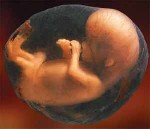 |
 |
Have we entered the era of the 1 year sequencer release cycle? *Updated*
Tuesday, January 13, 2015
Illumina's $1000 Genome*
Wednesday, January 15, 2014
A coming of age for PacBio and long read sequencing? #AGBT13
Saturday, February 23, 2013
Next Generation Sequencing rapidly moves from the bench to the bedside #AGBT13
Friday, February 22, 2013
#AGBT day one talks and observations: WES/WGS, kissing snails, Poo bacteria sequencing
Wednesday, February 20, 2013
Got fetal DNA on the brain?
Friday, September 28, 2012
Memes about 'junk DNA' miss the mark on paradigm shifting science
Friday, September 7, 2012
So, you've dropped a cryovial or lost a sample box in your liquid nitrogen container...now what?
Thursday, August 16, 2012
A peril of "Open" science: Premature reporting on the death of #ArsenicLife
Thursday, February 2, 2012
Antineoplastons? You gotta be kidding me!
Thursday, October 27, 2011
YouTube: Just a (PhD) Dream
Thursday, October 27, 2011
Slides - From the Bench to the Blogosphere: Why every lab should be writing a science blog
Wednesday, October 19, 2011
Fact Checking AARP: Why soundbytes about shrimp on treadmills and pickle technology are misleading
Monday, October 17, 2011
MHV68: Mouse herpes, not mouth herpes, but just as important
Monday, October 17, 2011
@DonorsChoose update: Pictures of the materials we bought being used!!
Friday, October 14, 2011
Is this supposed to be a feature, @NPGnews ?
Tuesday, October 4, 2011
A dose of batshit crazy: Bachmann would drill in the everglades if elected president
Monday, August 29, 2011
A true day in lab
Wednesday, August 10, 2011
A day in the lab...
Monday, August 8, 2011
University of Iowa holds Science Writing Symposium
Tuesday, April 26, 2011
Sonication success??
Monday, April 18, 2011
Circle of life
Thursday, March 17, 2011
Curing a plague: Cryptocaryon irritans
Wednesday, March 9, 2011
Video: First new fish in 6 months!!
Wednesday, March 2, 2011
The first step is the most important
Thursday, December 30, 2010
Have we really found a stem cell cure for HIV?
Wednesday, December 15, 2010
This paper saved my graduate career
Tuesday, December 14, 2010
Valium or Sex: How do you like your science promotion
Tuesday, November 23, 2010
A wedding pic.
Tuesday, November 16, 2010
To rule by terror
Tuesday, November 9, 2010
Summary Feed: What I would be doing if I wasn't doing science
Wednesday, October 6, 2010
"You have more Hobbies than anyone I know"
Tuesday, October 5, 2010
Hiccupping Hubris
Wednesday, September 22, 2010
A death in the family :(
Monday, September 20, 2010
The new lab fish!
Friday, September 10, 2010
What I wish I knew...Before applying to graduate school
Tuesday, September 7, 2010
Stopping viruses by targeting human proteins
Tuesday, September 7, 2010
 |
 |
 |
 |
Brian Krueger, PhD
Columbia University Medical Center
New York NY USA
Brian Krueger is the owner, creator and coder of LabSpaces by night and Next Generation Sequencer by day. He is currently the Director of Genomic Analysis and Technical Operations for the Institute for Genomic Medicine at Columbia University Medical Center. In his blog you will find articles about technology, molecular biology, and editorial comments on the current state of science on the internet.
My posts are presented as opinion and commentary and do not represent the views of LabSpaces Productions, LLC, my employer, or my educational institution.
Please wait while my tweets load 
 |
 |
youtube sequencing genetics technology conference wedding pictures not science contest science promotion outreach internet cheerleaders rock stars lab science tips and tricks chip-seq science politics herpesviruses
 |
 |
 |
 |
How AAAS and Science magazine really feel about sexual harassment cases in science

Is it a hoe? Is it a shovel?
It's bound to happen in every lab. Someone is going to get distracted and for whatever reason a box full of tubes or tubes themselves are going to accidentally get dropped in the lab's liquid nitrogen container. A lot of people might say, "Screw it," and leave those samples on the bottom of the tank. This might be a good solution for some samples, but what happens when you drop half a rack of boxes to the bottom of your tank? And what happens when those boxes are full of very important cell lines that keep your lab running?
I don't want to admit it, but this is exactly what happened to me today. I was preparing an order for a collaborator and getting 5 of my cell lines out of liquid nitrogen storage. I was explaining to my summer students how to safely handle liquid nitrogen, always wear cryoprotective gloves, lift the rack slowly and be sure to drain all of the liquid nitrogen before handling the boxes, etc. I got the box I needed, and put the rack back in the tank while I was hunting for my cells. Unfortunately, I forgot to put the wire back in the rack that holds the boxes in place. When I went to put the box back that I was handling, I pulled the rack up and half the boxes were gone. "Oh, shit."
So now the rack doesn't fit in the liquid nitrogen container because the bottom of the tank has 5 cryo boxes covering it and there are no empty racks to spread out the exposed boxes. If the boxes are out of liquid nitrogen and exposed to room temperature for too long, the samples will thaw and all of the cell lines will die. I temporarily put the boxes in the -80 freezer until I figured out how I was going to fish those boxes out. Someone suggested draining the tank but this is a 6 rack tank and probably had 40 liters of liquid nitrogen in it. Additionally, handling liquid nitrogen is extremely dangerous. Liquid nitrogen is a frosty -198 C which means that sticking your hand in the tank for more than 2 seconds will result in frost bite, any longer and you'll probably lose a limb. Spooning out the liquid nitrogen also isn't a smart option because liquid nitrogen quickly becomes nitrogen gas and can result in asphyxiation if you aren't handling it in a well ventilated area.

Professional grade kiddie tools
I thought about trying to buy one of those old people gripper things, or making chopstix out of dowel rods, but before I ran to the hardware store I did a quick google search to see if there was any advice out there. The first result was to a video over at JOVE: "Do-It-Yourself device for recovery of cryopreserved samples accidentally dropped into cryogenic storage tanks." Awesome!! Until the red box popped up that said, "Your University doesn't subscribe to us, please ask your library to buy access, SUCKER!!!" I guess I'm on my own. So I decided to find some old people grippers or make some chopstix out of stuff I could find at Lowes.
Of course, Lowes didn't carry old people grippers. I went to the garden tool aisle for inspiration and saw a post hole digger. It looked perfect, but it wasn't wide enough to fit a cryobox; that didn't mean I couldn't make something similar. I found a junk bin of kiddie tools and grabbed a hoe and a shovel. I really only wanted them for the business end of the tools since the handles were less than a foot long. I also picked up some four foot long wooden dowels that I could use as extra long handles for my chopstix/posthole digger contraption. The total cost was somewhere around $15. I drove home to assemble it in the Florida heat. I wish my garage was air conditioned sometimes. The flat part of the hoe was a little long, so I cut it in half with a dremel tool and a grinder disk. The shovel had a pointy tip, so I cut that off with the dremel too. I added a pin 13" down the handle to make the chopstix work more efficiently and keep the poles together while I was fishing.

The LN2 OOPSIES stick
I got back to lab with this goofy contraption and went to snag my boxes. I was hoping that I'd be able to get the flat end of the hoe under the box and use the shovel end to keep a grip on it. The worst thing in the world would be if I caught a box on the lid or the edge and it fell back in, spilling its contents all over the bottom of the tank. Luckily, none of the boxes opened up and I retrieved all 5 of them within about 10 minutes. This was an extremely safe method for retrieving the boxes. The wooden dowels transferred no temperature so my hands never got cold. I didn't need to get anywhere near the liquid nitrogen either. To find the boxes, I just used my contraption as a probe and banged the tank bottom until I hit something plastic.
I left the contraption in the lab next to the cryo gloves and named it the "LN2 OOPSIES stick." I hope my legacy lives on, because I signed them too...
EDIT: I see this post is now the 5th search result on google for this topic. That should be helpful to others in the future :)
This post has been viewed: 34826 time(s)
 |
 |
My stupidity taught them an important lesson. Always put the retainer wire back in :P I meant to do it that way...
Guest Comment
Dropped a beaker in the tank...don't ask.. but I'm going to try your method! Thanks for sharing! You're a life saver!
Guest Comment
Thanks! You are #1 on the list now, and the first thing I saw when I googled the same dilema. The first thing I thought was "fwew! I'm not the only one!" and the 2nd thing was "fwew, I may not have to transfer all the other samples and drain the dewer to get them back!"
WebRep Overall rating This site has no rating(not enough votes)Guest Comment
OK, I had to do this when I took over a lab. The cryo unit had tubes and other debris in the bottom and thawing the unit was not an option. To solve the problem, I attached a 6 inch diameter wire strainer to an old broom handle with worm gear hose clamps. Then you just remove a few of the towers and dip your 'metal net' into the liquid nitrogen to find your tube. This works best if you are using the vapor phase for cryostorage. You may need to remove most of the towers to capture your tubes since the tubes try to hide between the towers.
 |
 |
 |
 |









Jaeson, that's not true at most places. Top tier, sure, but 1100+ should get you past the first filter of most PhD programs in the sciences. . . .Read More
All I can say is that GRE's really do matter at the University of California....I had amazing grades, as well as a Master's degree with stellar grades, government scholarships, publication, confere. . .Read More
Hi Brian, I am certainly interested in both continuity and accuracy of PacBio sequencing. However, I no longer fear the 15% error rate like I first did, because we have more-or-less worked . . .Read More
Great stuff Jeremy! You bring up good points about gaps and bioinformatics. Despite the advances in technology, there is a lot of extra work that goes into assembling a de novo genome on the ba. . .Read More
Brian,I don't know why shatz doesn't appear to be concerned about the accuracy of Pacbio for plant applications. You would have to ask him. We operate in different spaces- shatz is concerned a. . .Read More